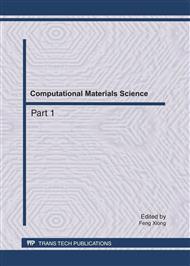p.1595
p.1601
p.1607
p.1613
p.1619
p.1623
p.1627
p.1633
p.1637
Using Information Entropy as Weight Determination Approach in Breast Cancer Case Retrieval
Abstract:
Currently, the earlier detection, diagnosis and treatment to breast cancer still mainly depend on physicians’ experience and knowledge. Case-Based Reasoning (CBR) mimics oncologists’ real thinking process and therefore is appropriate to the diagnosis decision making. In CBR, weight derivation as a key step is commonly conducted by expert score approaches using Delphi method. The accuracy of case matching largely changes with the selection and experience of experts. In this paper, information entropy for weight determination is introduced into the CBR. We conduct experimental studies to compare the performance of Delphi method and information entropy. The results suggest that: generally, information entropy is a better approach to weight derivation.
Info:
Periodical:
Pages:
1619-1622
Citation:
Online since:
July 2011
Authors:
Price:
Сopyright:
© 2011 Trans Tech Publications Ltd. All Rights Reserved
Share:
Citation:


